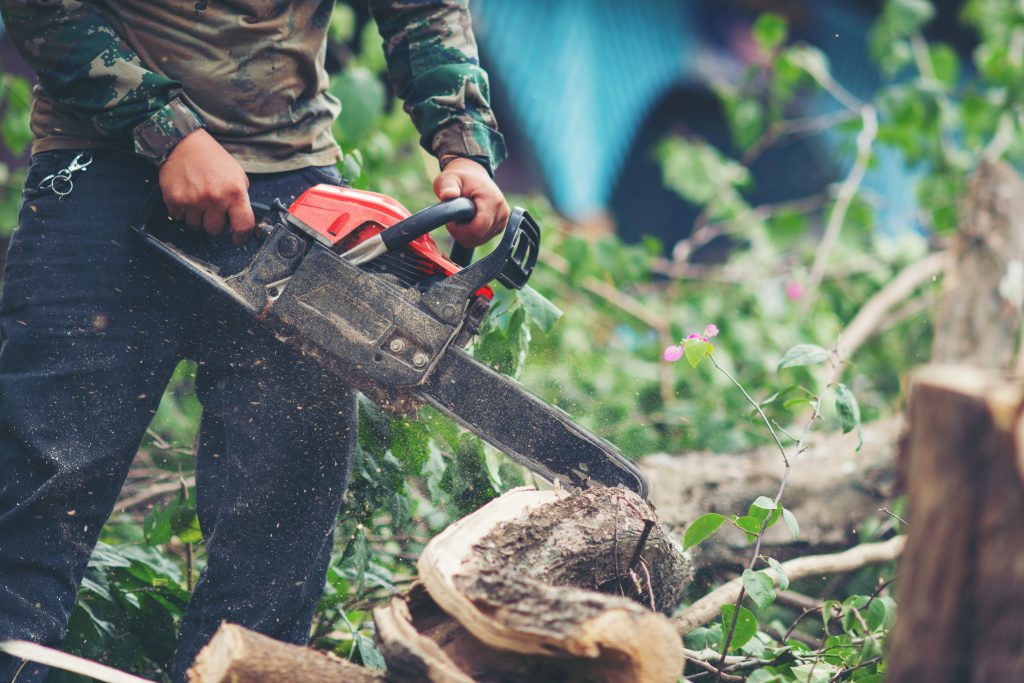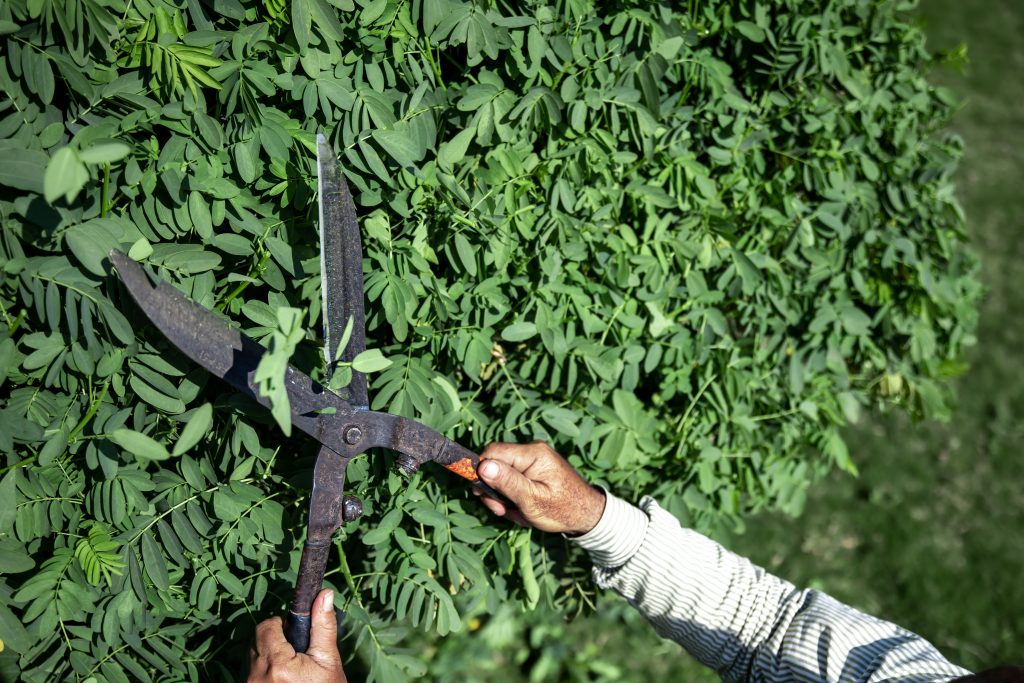Many Portland homeowners are working hard to keep their landscape and garden attractive and healthy. When looking for effective pruning tips for healthier trees and shrubs, it’s important to be aware of a few fundamental pruning techniques. Most people know that trees and shrubs need to be pruned occasionally, but very few understand why this is necessary. While pruning isn’t very hard, you still need to know what you’re doing to maintain the beauty of your garden and landscape. In this post, we’ll discuss what is pruning, its benefits, and the proper ways to prune your trees and shrubs.
What is Pruning
Pruning trees and shrubs is the process of selectively removing specific parts of the plant, such as branches, stems, buds, or roots. Homeowners should prune trees and shrubs with care and consideration for the specific needs and characteristics of each plant species. Improper pruning techniques or timing can potentially harm the plant and lead to long-term issues.
If you are looking for pruning tips for healthier trees and shrubs, it’s essential to remove dead and damaged branches to prevent the spread of disease and minimize the risk of injury or property damage. Pruning can enhance the appearance of trees and shrubs by promoting a balanced shape, encouraging flowering or fruit production, and controlling their size and density.
7 Common Tools for Pruning Trees and Shrubs
The choice of tool depends on factors such as the size of the branches, the type of pruning required, and personal preference. Always use sharp, well-maintained tools and follow proper safety precautions when pruning. Several common tools are used for pruning trees and shrubs. Each tool serves a specific purpose and is suited for different types of pruning tasks. Here are some of the most commonly used tools for pruning:
- Hand pruners (secateurs)
- Loppers
- Pruning saw
- Pole pruners
- Hedge shears
- Pruning pole saw
- Chainsaw
Benefits of Pruning for Healthier Trees and Shrubs
Pruning stimulates new growth and can help shape the plant to achieve desired aesthetics or improve its structure. Regular pruning of trees and shrubs offers several benefits for the plants and the surrounding environment. With the right tools on hand and proper pruning tips for healthier trees and shrubs, you can maintain the health, appearance, and functionality of your garden and landscape, contributing to a more sustainable and visually pleasing frontage of your property.
- Enhanced Health and Vigor
- Improved Appearance and Aesthetics
- Increase Flowering and Fruit Production
- Reduced Risk of Damage
- Enhanced Air Circulation and Light Penetration
7 Pruning Tips for Healthier Trees and Shrubs
Thinning out dense growth allows for better air circulation and light penetration, which is crucial for the overall health of the plant. With these pruning tips for healthier trees and shrubs, you can help ensure the long-term health and resilience of your trees and shrubs while minimizing the risk of potential problems.
1. Know the Plant
Understand the specific needs and growth habits of the trees and shrubs you’re pruning. Different species have different requirements regarding pruning techniques, timing, and tolerance to pruning.
2. Use Sharp Tools
Always use sharp, clean pruning tools to make precise cuts. Dull or dirty tools can cause jagged cuts that may damage the plant and increase the risk of disease transmission. Disinfect tools between plants, especially when dealing with diseased specimens, to prevent the spread of pathogens.
3. Prune at the Right Time
Timing is crucial when pruning trees and shrubs. Generally, it’s best to prune deciduous trees during their dormant season (late winter to early spring) before new growth begins. For flowering shrubs, prune immediately after they finish flowering to avoid cutting off the next season’s buds. Avoid heavy pruning during periods of active growth, as it can stress the plant.
4. Follow Proper Pruning Techniques
Make clean cuts just above a bud or lateral branch using the appropriate pruning technique for the plant. For larger branches, use the three-cut method: (1) Make an undercut a few inches from the branch collar to prevent tearing, (2) make a top cut slightly farther out from the undercut, and (3) make a final cut just outside the branch collar to promote proper healing.
5. Remove Dead, Diseased, or Crossing Branches
Start by removing dead, diseased, or damaged branches to improve the plant’s health and appearance. Also, identify and remove branches that are crossing or rubbing against each other, as they can create wounds and provide entry points for diseases.
6. Don’t Overprune
Avoid excessive pruning, as it can weaken the tree or shrub and make it more susceptible to pests and diseases. Follow the “less is more” approach and only remove what’s necessary to achieve your pruning goals. Over-pruning can also lead to rapid regrowth, which may require more frequent maintenance.
7. Consider the Tree’s Age
Adjust your pruning practices based on the age of the tree or shrub. Young trees may require more frequent pruning to shape their growth and establish a strong structure. As trees mature, focus on maintenance pruning to remove dead or damaged branches and promote overall health and vitality.
FAQs

When is the best time to prune trees and shrubs?
The timing of pruning depends on the specific plant species and the desired outcome. In general, dormant season pruning (late winter to early spring) is ideal for most deciduous trees and shrubs, as it promotes vigorous growth in the coming growing season. However, some flowering shrubs should be pruned immediately after flowering to avoid cutting off next season’s buds.
How can I tell if a branch needs to be pruned?
Branches that are dead, diseased, or damaged should be pruned to improve the overall health and appearance of the tree or shrub. Additionally, branches that are crossing or rubbing against each other should be removed to prevent wounds and promote proper growth. When assessing branches for pruning, look for signs such as discoloration, dieback, or abnormal growth patterns.
Can I prune trees and shrubs myself, or should I hire a professional?
Minor pruning tasks can typically be done by homeowners with the appropriate tools and knowledge. However, pruning large trees or those near power lines should be done by trained professionals to ensure safety and proper technique. Additionally, if you’re unsure about the pruning needs of a particular plant or concerned about causing damage, consulting with a certified arborist is recommended.
Will pruning stimulate new growth?
Yes, pruning can stimulate new growth by removing old or damaged branches and encouraging the plant to redirect resources to areas where growth is desired. However, the extent of new growth may vary depending on factors such as the plant species, pruning technique, and environmental conditions.
Conclusion
Hopefully, these pruning tips for healthier trees and shrubs have given you valuable information to achieve your health and aesthetic landscape goals. Pruning a tree or shrub in a way that preserves its health and structure while producing the desired effects takes expertise and experience. Simply contact us if you are unsure about when or how to prune a certain shrub or tree.


